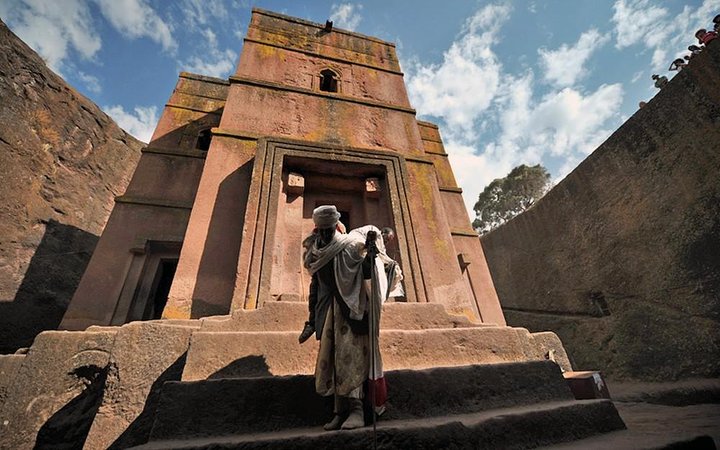Unveiling the Mysteries of Lalibela: A Journey Through Ethiopia’s Rock-Hewn Churches
Drawn by the allure of Ethiopia’s ancient wonders, I embarked on a journey to Lalibela, a UNESCO World Heritage Site. Join me as I explore the awe-inspiring rock-hewn churches and uncover the rich cultural heritage of this remarkable destination.
A Journey Through Time: Discovering Lalibela’s Rock-Hewn Churches
As a wildlife photographer and travel writer, my adventures have taken me to some of the most remote and breathtaking corners of Africa. Yet, my recent journey to Lalibela, Ethiopia, was unlike any other. Known as the “Eighth Wonder of the World,” Lalibela’s rock-hewn churches are a testament to human ingenuity and spiritual devotion. This UNESCO World Heritage Site offers a glimpse into Ethiopia’s rich cultural heritage, and I was eager to explore its ancient wonders.
Upon arriving in Lalibela, I was immediately struck by the town’s unique landscape. Nestled amidst the rugged Ethiopian highlands, the town is home to a collection of medieval churches carved directly into the red volcanic rock. These architectural marvels, dating back to the 12th century, are a testament to the enduring spirit of human creativity and faith.
My journey began with a visit to Bet Medhane Alem, the world’s largest monolithic church. As I stood before its towering facade, I was awestruck by its sheer size and intricate carvings. The church’s grandeur was matched only by the vibrant atmosphere within, as I was fortunate enough to attend a Kidase, a Sunday celebration. The deep spirituality of the service, combined with the hauntingly beautiful chants, left a lasting impression on me.
Exploring Lalibela’s Hidden Gems
Beyond Bet Medhane Alem, Lalibela is home to a myriad of other remarkable churches, each with its own unique charm. Accompanied by our knowledgeable local guide, Mulugeta, I ventured to Ashete Mariam, a smaller but equally impressive church located outside the main cluster. The peaceful and serene setting of Ashete Mariam provided a welcome respite from the bustling town center.
As I explored the church’s intricate carvings, I couldn’t help but feel a deep sense of connection to the past. The walls seemed to whisper stories of the generations that had come before, and I was captivated by the sense of history that permeated the air. Mulugeta’s insightful explanations brought the history of Lalibela to life, and his passion for the town’s heritage was infectious.
Mulugeta, an economist by profession with additional training in tourism, was a true asset to our journey. His fluency in Amharic, English, and German allowed him to connect with visitors from diverse backgrounds, and his enthusiasm for Lalibela’s history was evident in every word he spoke. His guidance enriched our experience, and I left Ashete Mariam with a newfound appreciation for Ethiopia’s cultural heritage.
Embracing the Spirit of Lalibela
As my time in Lalibela drew to a close, I found myself reflecting on the profound impact of this journey. The ancient architecture, spiritual atmosphere, and stunning craftsmanship of the churches were truly awe-inspiring. Lalibela is a destination that offers a glimpse into Ethiopia’s rich cultural heritage, and I felt privileged to have experienced its wonders firsthand.
The journey through Lalibela was not just a trip through time, but a testament to the enduring spirit of human creativity and faith. The rock-hewn churches stand as a symbol of resilience and devotion, and their beauty is a reminder of the incredible feats that can be achieved through determination and ingenuity.
As I boarded my flight back to Addis Ababa, I carried with me the memories of Lalibela’s ancient wonders and the stories of the people who call this remarkable place home. My journey to Lalibela was a thrilling adventure, and I am grateful for the opportunity to share its magic with my readers. For those seeking a unique and enriching travel experience, Lalibela is a destination that should not be missed. Lalibela Tour










































